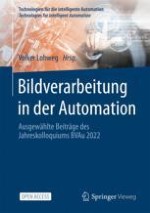In diesem Open-Access-Tagungsband sind die besten Beiträge des 8. Jahreskolloquiums "Bildverarbeitung in der Automation" (BVAu 2022) enthalten. Das Kolloquium fand am 02. November 2022 auf dem Innovation Campus Lemgo statt.
Die vorgestellten neuesten Forschungsergebnisse auf den Gebieten der industriellen Bildverarbeitung erweitern den aktuellen Stand der Forschung und Technik. Die in den Beiträgen enthaltenen anschaulichen Anwendungsbeispiele aus dem Bereich der Automation setzen die Ergebnisse in den direkten Anwendungsbezug.
